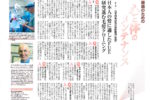Q: Is it harmful if I do not rinse or wash my recipient area for 5 to 7 days after the hair transplant? — T.E., Yonkers, NY
A: The purpose of showering the day after the procedure is to remove scabs and dried blood. This will allow for quicker healing, less inflammation (redness), and a reduced incidence of infection. It will also shorten the time post-op where the procedure might be detectable. In our practice, patients are instructed to start showering and gently washing the recipient area the day after the surgery. The first day after surgery the patient will shower three times, and for the remainder of the week, showering will be twice daily. When showering, patients can clean the transplanted area with a special medicated shampoo that is gentle on grafts. The follicular unit grafts are made to fit snugly into the recipient sites and will not be dislodged in the shower, as long as the patient washes gently.


 Dr. Bernstein presented results of his study, “Robotic Follicular Unit Graft Selection,” at the 2016 ISHRS World Congress held in Las Vegas, Nevada. Graft selection is a key advance in the ARTAS Robotic Hair Transplant System, a hardware and software suite that automates aspects of the Follicular Unit Extraction (FUE) hair transplant procedure. The enhancement makes Robotic FUE more efficient and improves patient outcomes.
Dr. Bernstein presented results of his study, “Robotic Follicular Unit Graft Selection,” at the 2016 ISHRS World Congress held in Las Vegas, Nevada. Graft selection is a key advance in the ARTAS Robotic Hair Transplant System, a hardware and software suite that automates aspects of the Follicular Unit Extraction (FUE) hair transplant procedure. The enhancement makes Robotic FUE more efficient and improves patient outcomes. Dr. Bernstein was featured in a wide-ranging interview published in the New York City-based, Japanese language magazine NY Japion. Among the topics discussed were the differences between FUT and FUE hair transplants, updates on robotic hair transplant technology, the type of procedure most beneficial for Asian patients, criteria that determine candidacy for a hair transplant, and more.
Dr. Bernstein was featured in a wide-ranging interview published in the New York City-based, Japanese language magazine NY Japion. Among the topics discussed were the differences between FUT and FUE hair transplants, updates on robotic hair transplant technology, the type of procedure most beneficial for Asian patients, criteria that determine candidacy for a hair transplant, and more. Robert M. Bernstein, MD, MBA, FAAD, FISHRS, a Clinical Professor of Dermatology at Columbia University in New York and distinguished pioneer of modern hair transplant surgery, was included for the seventeenth consecutive time in the ‘Best Doctors’ edition of New York Magazine. Dr. Bernstein was selected by his peers as one of New York’s top doctors on account of his prominent work in developing Follicular Unit Transplantation (FUT), Follicular Unit Extraction (FUE), and Robotic Hair Transplantation (Robotic FUE).
Robert M. Bernstein, MD, MBA, FAAD, FISHRS, a Clinical Professor of Dermatology at Columbia University in New York and distinguished pioneer of modern hair transplant surgery, was included for the seventeenth consecutive time in the ‘Best Doctors’ edition of New York Magazine. Dr. Bernstein was selected by his peers as one of New York’s top doctors on account of his prominent work in developing Follicular Unit Transplantation (FUT), Follicular Unit Extraction (FUE), and Robotic Hair Transplantation (Robotic FUE). Dr. Bernstein has a long affiliation with New York-Presbyterian Hospital, the teaching arm of Columbia University’s College of Physicians and Surgeons. In U.S. News & World Report’s 2016-17 survey of America’s best hospitals, New York-Presbyterian was rated #1 in New York and #6 overall in the country.
Dr. Bernstein has a long affiliation with New York-Presbyterian Hospital, the teaching arm of Columbia University’s College of Physicians and Surgeons. In U.S. News & World Report’s 2016-17 survey of America’s best hospitals, New York-Presbyterian was rated #1 in New York and #6 overall in the country.


